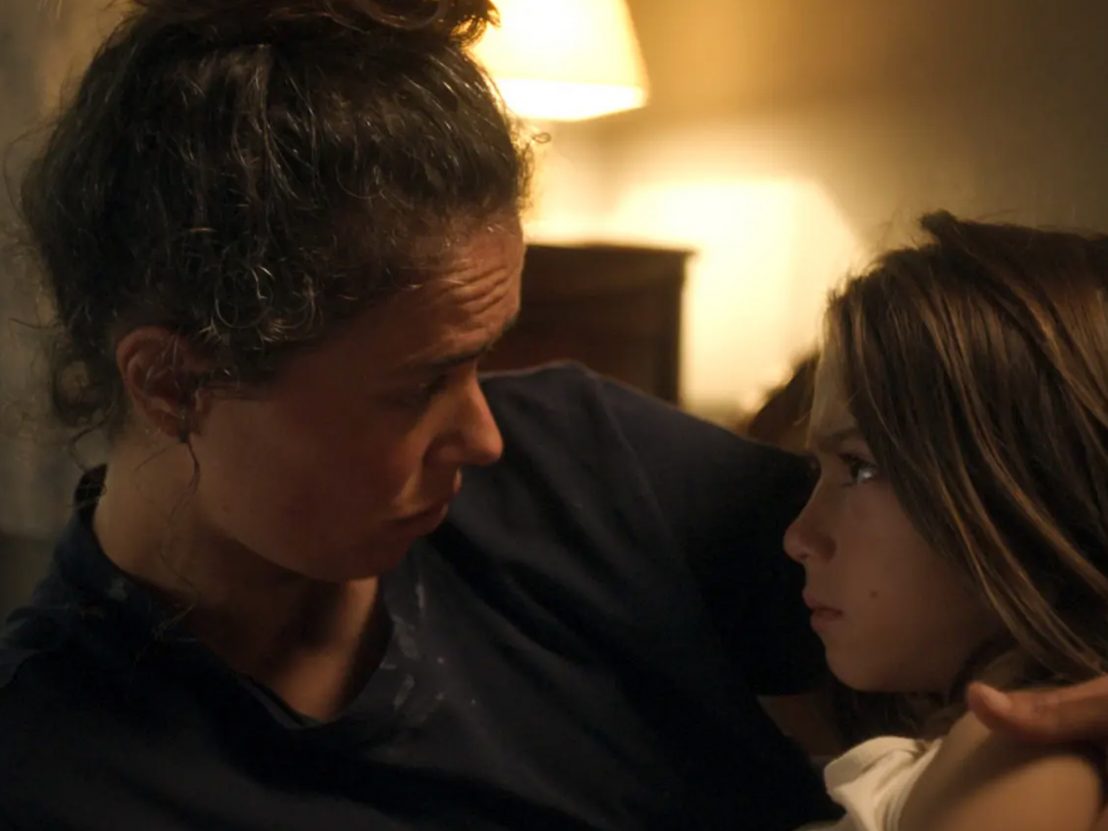
A mother and gender-curious child keep bees in Estibaliz Urresola Solaguren’s tender drama of division, renewal and the space in between.
20,000 Species of Bees, the debut feature from Basque filmmaker Estibaliz Urresola Solaguren, begins with a border crossing. In narrative terms, it marks the return home of Ane (Patricia López Arnaiz) and her three children to northern Spain from France for a family occasion. In symbolic terms, it speaks to the film’s broader interest in the definitions and categorisations of daily life. Here is the line that divides one country from another, but what about that liminal space as you cross between the two? What happens there?
At the beginning of the film, Ane’s youngest child (played with tenacity and skill by Sofía Otero) seems to hover in her own kind of liminal space. Later she will be called Lucía, but early on she is known as Aitor, or Cocó, both of which she hates. She doesn’t quite have the language for what she feels yet, but she knows that she isn’t the boy her family believes her to be. Her hair grows long and her clothes don’t betray any sense of gender expression – occasionally non-family members use “they” when talking about her, confused by what they see.
This ambiguity is aided by Ane, who tries to teach Lucía that binaries are futile and that boys and girls can do all of the same things. Ultimately, however, Ane still calls her Aitor and is deeply reluctant to listen to who she really is. The filmmaker is critical of the family’s attitudes but the soft, palatable arthouse style of the film can make its arguments feel a little toothless at times.
There is a tenderness to Urresola’s film which places Lucía at its heart and zooms out to look at wider family dynamics and their beekeeping business. In keeping with a recent trend in Spanish filmmaking, notably including last year’s Berlinale Golden Bear winner Alcarràs by Carla Simón, the filmmaker explores the relationship between people and their agricultural businesses, looking at how ideas of legacy cement old ways of thinking. Lucía feels at home among the beehives with her great aunt Lourdes (Ane Gabarain), the most receptive to her feelings and quick to adopt the “she” pronoun.
Urresola uses the metaphor of the beeswax – malleable and fluid in form when subject to different temperatures – to illustrate Lucía’s personal fluctuations in her sense of self. But the familial traditions the bees otherwise represent are damaging to Lucía whose frustration and heartbreak over her family’s prevention of her self-expression causes her to act out, tensions rising most clearly between her and her mother. Ane is facing her own demons from childhood, although this is a weaker and less developed strand of plot.
While there is much to be compelled by narratively, formally the film offers less intrigue. It adheres to a formulaic arthouse mode that continues to appear in festival films again and again; there are warm and evocative images, naturalistic dialogue and performances, sparse but effective music, but all of this amounts to a film very much like those that have come before. Still, its socio-political commentary and the sensitivity with which it depicts Lucía’s story of gender identity offers a compassion that is too rarely seen in reality, making its impact more profound.
Published 23 Feb 2023